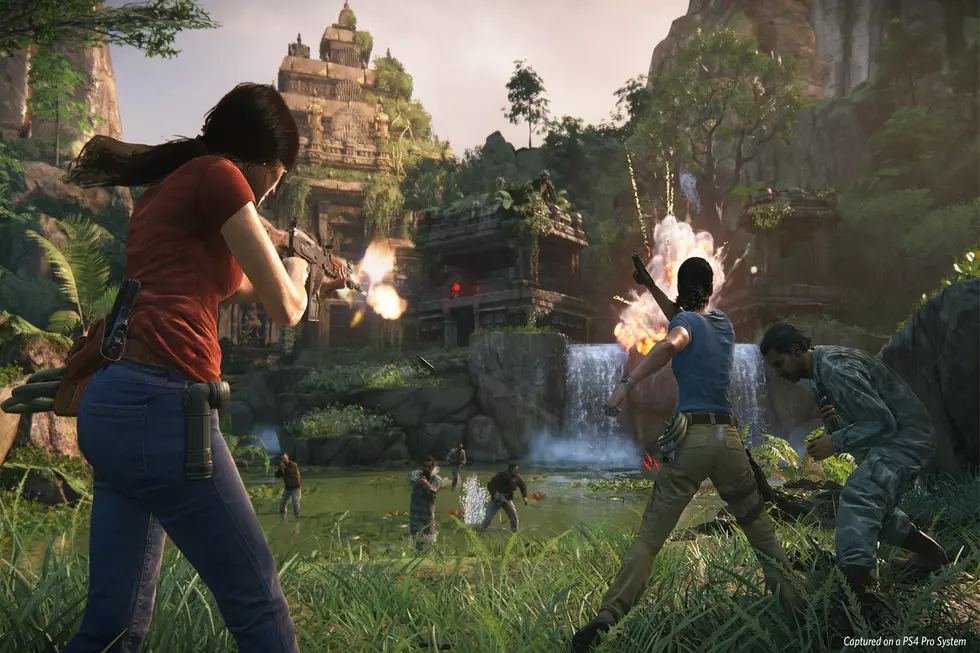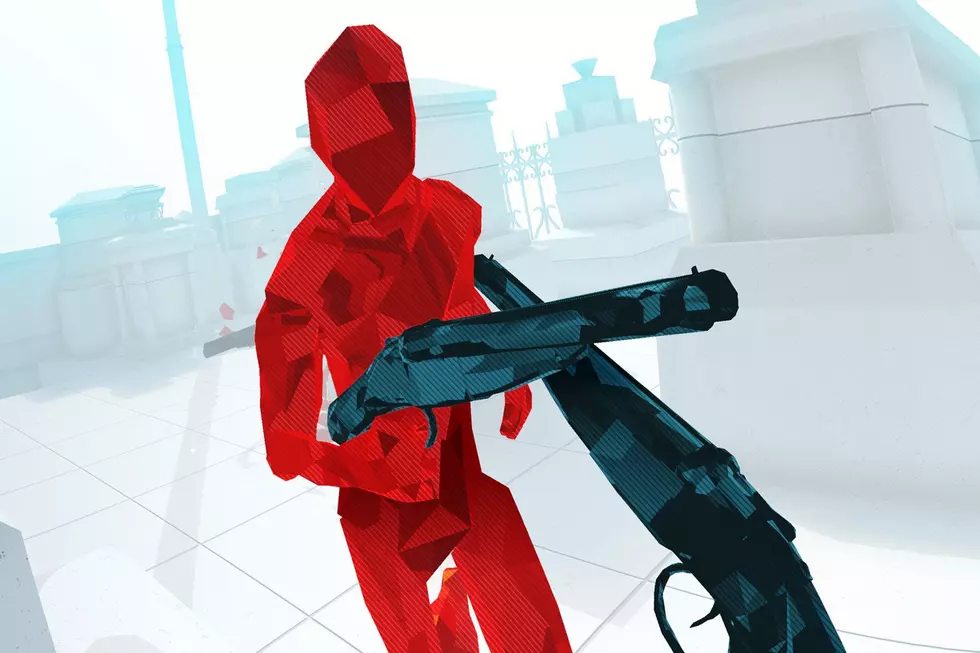
Metal Gear Solid V: The Phantom Pain Review (PlayStation 4)
After 17 years and numerous times when he said he was finished with the series, legendary game maker Hideo Kojima has released his true swansong to the Metal Gear Solid franchise in what is likely going to be his magnum opus, Metal Gear Solid V: The Phantom Pain. Both controversy and a high level of expectations surround The Phantom Pain, as Kojima is expected to be leaving Konami after three decades of working there. Fortunately, The Phantom Pain shatters these expectations and transcends its circumstances through sheer gameplay alone. If Hideo Kojima really is leaving and never planning to revisit the Metal Gear series he started on the MSX2 back in 1987, then consider this the perfect way to say goodbye to the fans and the franchise.
While we all want to meet the members of Foxhound when they were younger and see how Hideo Kojima wraps up the epic MGS story, the tale of Metal Gear Solid V goes in directions that you weren't expecting. After finding out how much of a glorified demo Ground Zeroes turned out to be, it feels like there was much more dialogue from Big Boss from back then than in The Phantom Pain. Despite excellent voice acting from Kiefer Sutherland, Venom Snake remains relatively quiet for most of the game's events, occasionally adding a line of incite to Kaz Miller and Revolver Ocelot's dialogue in cutscenes and is almost mute in response to their multitude of codec messages (this is mainly because you can play other Diamond Dogs soldiers in the field in place of Snake).
Kojima responds to the criticism of Guns of the Patriots' lengthy cutscenes by taking the opposite approach in terms of letting the story unfold naturally. Now, cutscenes are spread far apart and relatively short. Those wanting to learn more about the lore can listen to the hours of dialogue and exposition recorded on the dozens of cassette tapes that help connect the dots of The Phantom Pain's ethereal but enriched story, which doesn't really start to heat up until you've Fultoned hundreds of soldiers, cleared dozens of missions and side-ops and racked up a ton of playtime .
Despite how far apart the cutscenes are, The Phantom Pain has all the Kojima-isms you were hoping for— expect a J.J. Abrams level of blue lens flares. More importantly, expect all of the historical world issues, controversies, B-movie silliness and intricate storytelling Kojima is known for, only this time, everything is full of flavor and cut into meaty bits. Those new to the franchise aren't going to get their hand held through the story and are going to be left either completely confused or running to Google to research every phrase and character. There are more references to Ground Zeroes and Peace Walker (which are probably the least-played parts of the MGS series) than the numbered entries of the franchise, so even those relatively familiar with the story might find themselves lost by where The Phantom Pain takes them.
There were times where the soldiers' random exchanges had me laughing out loud and times when the dialogue felt completely unnatural, forced and contrived, but I was always entertained. The plot explores themes and ideologies that most video games and movies never even touch, let alone dive into. Despite the dynamic range of the writing, Metal Gear Solid V: The Phantom Pain tells a subtle, expectation-shattering tale that will reel you in if you're willing to unravel everything it presents (yes, you will have your mind blown if you become invested and stay away from spoilers). Fortunately, the real stories to be told in The Phantom Pain come from your open-ended experiences on the battlefield.
As always, Kojima and his team know how to effectively push the limits of current gaming technology. You're free to zoom in whenever you'd like, even during cutscenes, as if Kojima wants you to inspect how meticulously detailed the game's models and assets are. Here we see the Fox Engine on full display and everything looks gorgeous. Without a doubt, this is one of the best-looking games of this generation and has set a new standard for all the AAA titles that will debut after it. There wasn't a single moment where I thought to myself that anything looked bad or even mediocre. Massive sandbox worlds usually tend to get ugly in the smaller details of things, such as environmental items in the background that you're not supposed to really focus on, but everything in Africa and Afghanistan looks pristine. Every soldier, vehicle, building, tank and gun were rendered perfectly in terms of their visuals and audio quality.
There are only three big zones in Metal Gear Solid V: The Phantom Pain: Afghanistan, Central Africa and Mother Base. For the first third of the game, your missions will take you throughout the desert and mountain-ridden lands of Afghanistan. So much has been done to effectively replicate what life was like during the Soviet-Afghan War. You'll encounter entire towns that have been redesigned by the Soviet Army as makeshift encampments and military bases. While I was left questioning why weren't there any locals hiding in any of the houses or anything of that nature, I realized that they would've merely been a hindrance on the game's espionage and fighting systems.
Likewise, I was expecting some Mujahideen forces, but most of them were simply prisoners of the Soviets that you end up rescuing. As you'd expect, there are plenty of barren areas, and you'll notice how empty most of the wilderness is since you'll be running, driving or riding a horse between Soviet bases and compounds, which can be miles apart. While everything looks authentic, I was hoping the Afghanistan level had a bit more variance to it other than the few dozen enemy compounds, abandoned buildings and mountains that all started to blend together after a while. Africa is quite varied, showing the affects of war on both its children and its environment. The first time I saw a thunderstorm light up the skies above the jungles of Africa, I was thoroughly impressed. Thankfully, all my gripes with the environments are easily forgotten once Snake (or whatever soldier you're using) starts dealing with enemy forces.
Sandbox games such as Grand Theft Auto V offer a ton of things to do out in the world, but there's a distinct difference in the freedom you can experience as Trevor Phillips compared to Venom Snake. While you're free to do as you please in Central Africa and Afghanistan, there's not much to do besides exploring, scouting and engaging the enemy forces. Luckily, this is where MGSV's greatest strength comes in, as the combat and stealth gameplay here is the best I've ever played. Despite how vague its story can get, The Phantom Pain's real story is on the battlefield, and Kojima completely leaves that up to you. Sure, Miller and Ocelot usually give you a thin tale about some prisoner you have to save or enemy forces you have to take out, but it's up to you to decide how to get there and make it happen. Never before have I been given so many ways of infiltrating enemy bases and dealing with their forces. Whether you want to go in Rambo-style in body armor and mow everything down with an M60 machine gun or if you want to go in Fox-style without ever alerting anyone to your presence, The Phantom Pain has mastered its full menu of action and stealth, where your reflexes, skills and creativity are all encouraged to help deal with the smartest AI soldiers I have ever encountered in the video game medium.
The binocular scouting system of Ground Zeroes is back full force in The Phantom Pain. Most of your enemy engagements will start off with you scouting the area (preferably from a high vantage point) where you mark your enemies. Once marked, you're able to see their locations and body shapes through walls so you can always keep track of them. Most of the time, you'll be caught by the enemy due to your own mistakes or miscalculations, such as forgetting to mark a soldier making patrols, knocking something over or making a noise. Even then, The Phantom Pain's Reflex Mode mechanic offers you some forgiveness in the form of a three-second-long slow motion sequence where you have to incapacitate the enemy that spotted you before he alerts his comrades. Preferably, you should keep quiet in dispatching your enemies in order to avoid being swarmed by all the soldiers of the base, who can also call in for reinforcements.
The enemy AI is superb. They'll flank you, shoot flares into the sky to illuminate the shadows you might be hiding in, search your last known position, use mortars and implement all kinds of natural responses to your actions. If you keep using specific tactics in taking your enemies out, their commanders will eventually learn and utilize brilliant countermeasures to your gameplay style. Fan of headshots? Don't be surprised if the enemies are wearing helmets next time. Sticking to the shadows and only attacking during the nighttime hours will result in the enemy being equipped with night vision goggles (hint: equip a flashlight on your gun for soldiers wearing NVGs to blind them).
Despite how many enemies there are or how well they adapt to your tactics, The Phantom Pain offers a ton of variety when it comes to getting help in the field. You have the ability to extract the incapacitated soldiers you encounter and ship them to your Mother Base to be forced into your private army. In turn, your Diamond Dogs forces have all kinds of functions to help you from behind the scenes. The Intel division uses satellite imagery to locate the areas where you should expect a soldier to be at. The Support team outfits your helicopter with weaponry to call in aerial bombardments, chaff dispersal and machine gun-based aerial assaults. Your R&D team helps develop the hundreds of gadgets and guns you can have at your disposal. Best of all, you can get them delivered to you whenever you'd like (for a cost in GMP, the game's currency).
If you find yourself fighting an enemy sniper, you can have a sniper rifle delivered straight to your location in less than a minute. You can have vehicles, ammo and even buddies arrive via aerial drops to help you get the job done. Best of all, the crates of these aerial drops can be used to knock out soldiers that are standing in the same position for long periods of time (such as snipers and spotlight guards). Heck, if you're good enough at stealth, you can infiltrate a base and carry out your objective without firing a single shot or letting the enemy even know you were there. There's an unparalleled level of freedom that just adds unpredictability, gameplay variability and overall fun that is unlike anything I have ever encountered.
During one mission, I had to take out as many enemy vehicles traveling along two paths that I could with a time limit running. I went to the map where the paths converged and set C4 charges and inflatable decoys that look like Snake. I'd either use rockets or the C4 to get rid of each distracted armored vehicle (later on you can Fulton tanks and other heavy vehicles to keep at Mother Base). With only a minute left and the final target far away, I put C4 on the back of my jeep, sped towards the final vehicle, dove out the ride and detonated the charge right when the jeep hit the target. It was glorious. I also put C4 on a light machine gun turret, Fultoned it into the air and detonated it as an enemy chopper flew right next to it.
The freedoms of The Phantom Pain are widely enhanced by the Buddy system (as cheesy as it sounds). Before each mission, you can choose a Buddy to accompany you out in the field, but you're only allowed to have one with you at a time. At first, Diamond Horse is your only choice, but he easily becomes obsolete due to the other companions you get as you progress. Nevertheless, you'll always miss the skills of the companions who aren't there. Diamond Dog, or DD, is an automatic scout who will mark every soldier and turret within a large radius around you so you don't have to worry about binoculars. Having Quiet the sniper cover you is nice, but you'll miss the D-Walker Metal Gear bot's abilities to stealthily carry you places — these are things you have to consider for your mission. You can always switch Buddies on the fly via iDroid, but it costs money and takes a minute for the new one to arrive. I should note that D-Horse and DD have gotten in the way of quite a few of my shots. They're also akin to to being inadvertently hit by my explosives and CQC attacks.
My main letdown would be how boring it is to visit Mother Base. It's massive (requiring jeeps to travel the needlessly long distances between platforms) and there are just miles of content where there is simply nothing there to see or do. Sure if an online enemy invades your base that offers plenty of hiding places, but they're there to sabotage/steal your resources. You can see a small percentage of your soldiers (around five guys per platform) but never really get the feeling that you command an actual army outside of a few cutscenes. Other than looking for diamonds and seeing a couple of VIP characters later on, there's nothing to do at Mother Base besides beat up your soldiers and shower off your blood. After the first couple missions, you don't even see Miller or Ocelot around the base anywhere. Almost every door at the base isn't functional and just there for decor, making everything feel really empty and lifeless.
There are target practicing sequences that you can only use with your stun/tranquilizer-based weapons as you can't risk killing your soldiers. There should have been a firing range where you could have tried the dozens of guns and items your R&D team is continuously cooking up. I should also add that even though the game does have a set of endgame missions and an ending, the game's story is technically incomplete. There's a major plot sequence that is left obviously unresolved by the game's ending that just begs to be solved. The Collector's Edition of the game revealed that Mission 51 originally explored this plotline and had an epilogue-like ending, but it was scrapped. Its cutscenes were actually rendered and voiced, but the gameplay sequence was not. It's easy enough to find video footage of Mission 51 and the game's "real" ending online, but I was letdown to see something that massively important not included.
While all signs are pointing to Hideo Kojima leaving Konami and never returning to the Metal Gear franchise ever again, he left us with a slightly unfinished masterpiece. I've had more fun playing Metal Gear Solid V than probably every other action or stealth game I've played in the past decade. After roughly 53 hours of gameplay, I'm still finding secrets, Easter eggs and finding out new ways to engage the enemy. Even if Konami decides to continue the franchise without Kojima in the director's chair, I have a feeling no one else can remotely make a game half as good as Metal Gear Solid V, and those are going to be some big shoes to fill.
Even though Kojima pumped the brakes on spoon-feeding us tons of narrative content, he encourages the player to personally define what it means to be Snake, as he has redefined the expectations of action/stealth titles in general. There's always room for improvement in the video game medium, and Kojima has set a new standard that most other studios will never come close to reaching. Metal Gear Solid V: The Phantom Pain might not be the perfect game, but it's as close as any title has ever gotten. Don't let the destruction of Militaires Sans Frontieres fool you — this is Outer Heaven.
This review was completed based on a purchased retail copy of Metal Gear Solid V: The Phantom Pain for the PlayStation 4.
More From Arcade Sushi









